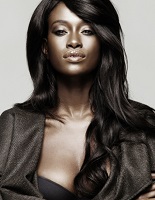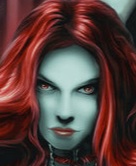|
- Getting Started
- Help
- Master Lists
- Useful Links
- Features
Dance Skill - Interest and Input
(This is a thread from Mizahar's fantasy role playing forums. Why don't you register today? This message is not shown when you are logged in. Come roleplay with us, it's fun!)This is the first step to starting a lore article. Please hold all conversations about lores here in this forum. No development takes place here ie Article posting. This forum is simply for threads that want to hash out what a lore should or shouldn't include as well as its merits and flaws. One can also gauge interest in new lore here as well. Polls are encouraged.
Moderator: Scribes
Dance Skill - Interest and Input
![]() by Sayana on February 9th, 2015, 7:56 pm
by Sayana on February 9th, 2015, 7:56 pm
-

Sayana - Dancing in the rain...
- Posts: 1938
- Words: 1543550
- Joined roleplay: September 22nd, 2014, 12:38 am
- Location: Sunberth
- Race: Eypharian
- Character sheet
- Storyteller secrets
- Scrapbook
- Journal
- Plotnotes
- Medals: 8
-


-


-


-


Dance Skill - Interest and Input
![]() by Irriari on February 9th, 2015, 8:41 pm
by Irriari on February 9th, 2015, 8:41 pm
I wish you the best of luck in this. I would like to see the skill fleshed out, and the addition of regional dances would be fantastic, I just fear it will be difficult to gather accurate information about each area as many places lack an ST. I ran into that (to a lesser degree) when I approached the faction/area specific intimidation styles section, which was why I decided to scrap it.
Active thread count: 8/8
-

Irriari - Blood and Poison
- Posts: 614
- Words: 374003
- Joined roleplay: May 9th, 2011, 10:57 pm
- Location: Ravok
- Blog: View Blog (4)
- Race: Zith
- Character sheet
- Storyteller secrets
- Scrapbook
- Plotnotes
- Medals: 5
-


-


-

Dance Skill - Interest and Input
![]() by Matthew on February 9th, 2015, 9:37 pm
by Matthew on February 9th, 2015, 9:37 pm
Apparently I applied to develop this skill a long time ago and never followed through on it. I thought I would post the information I had so far, though mine was only a very rough draft and did not include some of what I would think should be required, such as specific moves/styles and different cultural things. You are still welcome to use as much or little of it as you wish.
Dance Dance is an artistic form using body movements to communicate emotions or Prerequisites and Related Skills There are no particular Prerequisites for Dance. Related Skills include Acrobatics, which can aid a dancer in making flexible or acrobatic sorts of movements, and Seduction, for adding a sense of sultry allure to the dance. One can use Cosmetology to apply attractive make-up for a professional dance, or ritualistic make-up for a tribal dance. Often dancing is combined with other skills for a variety of reasons, such as to compliment a Martial Art, or to dance along to a Musical Instrument. Dance can alsu be used as a form of Storytelling, Acting, or accompany Singing. Learning and Training While a certain level of progress can be made on your own, after a certain amount of time, it is almost required to have a teacher or an experienced dancer to mimic. Learning is as simple as moving your body instinctively to a beat, or as advanced as taking complex instructions from a Dance master. Training is done in the form of practicing what one already knows, attempting to discover more, or taking formal training from a skilled Dancer. Skill Progression Novice (1-25) Novice Dancers have likely learned by themselves, or simply tried to mimic dancers they have seen before. They may have had a lesson or two, but not very much in the way of actual constant training. They know how to move their bodies to a beat in a way that doesn't make them feel entirely awkward or stupid, and to an onlooker, it might even look as if the dancer knows what they are doing. There isn't that much finesse or technique involved at this level, more of an instinctual knowledge of how to move. They still need a lot of training at this point, though they can be hired for jobs, but perhaps with the promise that they will continue to work hard on getting better. At this level they are probably only used to one or two types of music, and have a hard time dancing a routine to a tune they are unfamiliar with. Competent (26-50) A Competent Dancer has had a bit more training and experience, and is a lot more aware of their body than they were in the beginning. Instead of simply moving instinctually and leaving it at that, they can actually feel what muscles are used to make what movements, and will find that they have some level of hip, stomach, and chest control. They will find that their dancing can actually aid other skills in some way, from making their Martial Arts more graceful, to making their Seduction a bit more sultry. They can definitely catch some eyes if they choose to do so, and have grown accustomed to multiple types of movement and music. Expert (51-75) An Expert Dancer has reached a level where they are almost in complete control of their body. Hips can instinctively move in complex tempos and beats while the dancer also moves their hands or head in very specific ways. While they have a large amount of control over specifics parts of themselves, that control can display itself almost instinctively, making the dancer look quite stunning without even trying. Their dances can be seductive, threatening, passionate, fierce, or moving. They stand out from other dancers, and if among a crowd of lesser skilled peers, will often find that every eye favors them. At this level, a dancer will often have a single style that they are a near master of, but knows various other styles they can use skillfully if needed. Master (76-100) A Master Dancer will find that the movements of their body come without thought. They can perform a variety of dance styles as a masterful level, and are actually hypnotic to watch if they wish to be. A seductive dancer can make jaw's drop and minds lose track of time, while a tribal dancer will able to whip their fellows into a religious frenzy. They are skilled enough that if they are the dance partner to an unskilled dancer, they can manipulate their partner in such a way that the partner looks skilled as well. This is the pinnacle of dancing, and is highly sought out. A Master can invoke many an emotion in anywhere from a single onlooker to a hundred, and the skilled movements of their body are borderline supernatural. |

06/09I apologize for the bout of silence! I was in a car accident this past Friday and while I am okay, I am a bit banged up. I have several fractures in my right side, including my hand. This will considerably slow my posting rate while I am doped up on pain meds and limited to one hand. I don't have an exact date that I will be back to full capacity, but the doctor estimates around three weeks at minimum. I will try and continue posting updates.
06/25While I am in much better condition and able to type fairly decently now, any large amounts of typing eventually start to bring some pain. I will be pumping out replies soon, but they will likely be much shorter than normal.
06/25While I am in much better condition and able to type fairly decently now, any large amounts of typing eventually start to bring some pain. I will be pumping out replies soon, but they will likely be much shorter than normal.
-

Matthew - Malfunctioning
- Posts: 1206
- Words: 1100152
- Joined roleplay: June 24th, 2013, 9:37 pm
- Race: Human
- Character sheet
- Storyteller secrets
- Journal
- Plotnotes
- Medals: 5
-


-


-

Dance Skill - Interest and Input
![]() by Sayana on February 9th, 2015, 9:46 pm
by Sayana on February 9th, 2015, 9:46 pm
|
-

Sayana - Dancing in the rain...
- Posts: 1938
- Words: 1543550
- Joined roleplay: September 22nd, 2014, 12:38 am
- Location: Sunberth
- Race: Eypharian
- Character sheet
- Storyteller secrets
- Scrapbook
- Journal
- Plotnotes
- Medals: 8
-


-


-


-


Dance Skill - Interest and Input
![]() by Sayana on March 8th, 2015, 5:29 am
by Sayana on March 8th, 2015, 5:29 am
|
-

Sayana - Dancing in the rain...
- Posts: 1938
- Words: 1543550
- Joined roleplay: September 22nd, 2014, 12:38 am
- Location: Sunberth
- Race: Eypharian
- Character sheet
- Storyteller secrets
- Scrapbook
- Journal
- Plotnotes
- Medals: 8
-


-


-


-


5 posts • Page 1 of 1
Who is online
Users browsing this forum: No registered users and 0 guests